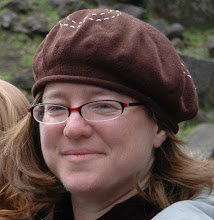 Portraits of early American Jews tell us a lot about how Jews wanted to be seen and remembered. They also tell us about how Jews dressed and how they thought about family. Who was featured together in portraits? Where were the paintings hung? Over ten years ago, the Jewish Museum in New York featured an exhibit entitled, "Facing the New World: Jewish Portraits in Colonial and Federal America," the exhibition book for which is still a landmark in the field. Today, many early American Jewish portraits are available online through the Loeb Database of Early American Portraits at AJHS.
Portraits of early American Jews tell us a lot about how Jews wanted to be seen and remembered. They also tell us about how Jews dressed and how they thought about family. Who was featured together in portraits? Where were the paintings hung? Over ten years ago, the Jewish Museum in New York featured an exhibit entitled, "Facing the New World: Jewish Portraits in Colonial and Federal America," the exhibition book for which is still a landmark in the field. Today, many early American Jewish portraits are available online through the Loeb Database of Early American Portraits at AJHS.
This summer I am teaching a MALS class on material culture in the Jewish Atlantic World. This week we've focused on portraits and representations of Jews between 1640-1840. I like to distinguish between portraits paid for by a patron (who had the power not only to choose his clothes and the painter, but also not to pay for the work if it wasn't to his liking), and paintings of Jews over which the sitter had little or no input or control. Examples of a portrait would be Gilbert Stuart's "Mrs. Aaron Lopez and Her Son Joshua" (1772/73) or Gerardus Duyckinck's "Portrait of Franks Children with Lamb" (ca. 1735). In contrast, an example of an unsolicited representation of Jews would be Pierre Jacques Benoit's "Shopkeeper and Tailor, Paramaribo, Surinam" (1839). Somewhere in between these extremes is Bernard Picart's Etchings of Amsterdam's Jews, an example of which I featured in my post on the House of the Rounds. Comparing these types of representations of Jews can help students understand the differences between how Jews were seen by others and how they wanted to be seen.
Below are some resources for other teachers who are interested in having students analyze early Jewish portraits in class.
Sylvan Barnet’s General Questions Art Historians Ask About Art1. What is my first response to the work? (Later you may modify or even reject this response, but begin by trying to study it.)
2. Where and when was the work made? Does it reveal qualities attributed to the culture? (Don't assume that it does; works of art have a way of eluding easy generalizations.)
3. Where would the work originally have been seen? (Surely not in a museum or textbook.)
4. What purpose did the work serve? To glorify a god? To immortalize a man? To teach? To delight? Does the work present a likeness, or express a feeling, or illustrate a mystery?
5. In what condition has the work survived? Is it exactly as it left the artist's hands, or has it been damaged, repaired, or in some way altered? What evidence of change do I see?
6. What is the title? Does it help illuminate the work? Sometimes it is useful to ask yourself, what would I call the work?
Specific Questions I Ask about Portraits
1. Was the portrait commissioned by the sitter (or the sitter’s family) or was it created without the sitter’s input?
2.Does the portrait emphasize or elide ethnic identity?
3. What social type does the sitter represent? (There may be more than one.) How do you know?
4. What is the class/social rank of the sitter? How does the painter establish the rank of the sitter? Does the social standing of the painter tell us anything about the social rank of the sitter?
5. What objects does the sitter hold or have around him/her? What message do these objects convey?
6. Is anyone else present in the portrait? Do these people help construct a communal identity for the sitter or emphasize the sitter as defined by specific relationships?
7. What is the sitter wearing? How do the clothing help establish the sitter’s identity?
8.If possible, look at another portrait by the same artist of a non-Jewish patron.What differences do you notice? What is the significance of the differences? [For example you could compare Gilbert Stuart's portrait of Sarah and Joshua Lopez to that his portrait of Christian Stelle Bannister and her son John].
9.If a child is in the portrait is (s)he presented as a “little adult” or as a child?
10.If you feel comfortable thinking about styles of art, in what style is the portrait made?
Resources for Finding Portraits from the Jewish Atlantic World
A. ELECTRONIC
- Database of Early American Jewish Portraits (Mainly New York, Newport, but you can also search by colony through the keywords)
- Surinam Mapped Out Collection (Suriname; Try Browsing Keyword "Joden")
- Portrait of Sarah Solis Carvalho by Solomon Nunes Carvalho (sometimes of Barbados) ca. 1856
- Collections of the Jewish Museum, London (England)
- Jewish Historical Museum Amsterdam Collections (Amsterdam, Curacao, Suriname)
- Images by Benoit of Suriname (Suriname); Most Famous Example
- Belisario: Sketches of Character (Jamaica, London)
- Rembrandt's Jews (Amsterdam)
- Reframing Rembrandt: Jews and the Christian image in seventeenth-century Amsterdam by Michael Zell (Amsterdam)
- Bygone Barbados (Barbados)
- Facing the New World: Jewish Portraits in Colonial and Federal America



0 comments:
Post a Comment